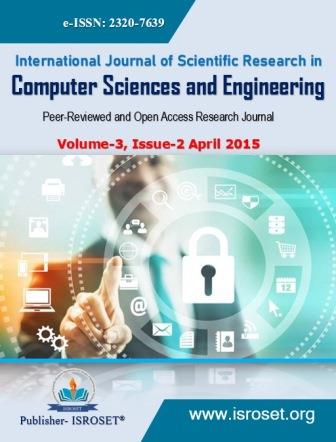Recent Methodologies for Improving and Evaluating Academic Performance
Keywords:
Classification, Data Mining, Bayesian Network, Neural NetworkAbstract
In the real world, predicting the performance of the students is a challenging task. Many of the well known technical colleges are successful as they have meritorious students and faculty with them and a foolproof system working for them to grow continuously. The primary goal of Data mining in practice tends to be Prediction and Description. For educational institutions, the success of creation of human capital is the subject of a continuous analysis. To date, higher educational organizations are placed in a very high competitive environment and to remain competitive, organizations need better assessment, evaluation, planning, and decision making. As such, classification modeling for academic performance for the graduates could provide some insight to the university in order to take necessary information for improving the students’ academic performance. Hence, the aim of this study is to provide the review of different data mining techniques that have been used in educational field with regard to evaluation of students’ academic performance. Academic Data Mining used many techniques such as Decision Trees, Neural Networks, Naïve Bayes, K- Nearest neighbor, and many others. Using these techniques many kinds of knowledge can be discovered such as association rules, classifications and clustering. The discovered knowledge can be used for prediction and analysis purposes of student patterns.
References
Al-Radaideh, Q., Al-Shawakfa, E. and Al-Najjar, M. (2006) ‘MiningStudent Data Using Decision Trees’, The 2006 International ArabConference on Information Technology (ACIT'2006) – ConferenceProceedings.
Ayesha, S. , Mustafa, T. , Sattar, A. and Khan, I. (2010) ‘DataMining Model for Higher Education System’, European Journal ofScientific Research, vol. 43, no. 1, pp. 24-29.
Baradwaj, B. and Pal, S. (2011) ‘Mining Educational Data toAnalyze Student s’ Performance’, International Journal of AdvancedComputer Science and Applications, vol. 2, no. 6, pp. 63-69.
Chandra, E. and Nandhini, K. (2010) ‘Knowledge Mining fromStudent Data’, European Journal of Scientific Research, vol. 47, no.1, pp. 156-163.
El-Halees, A. (2008) ‘Mining Students Data to Analyze LearningBehavior: A Case Study’, The 2008 international Arab Conference ofInformation Technology (ACIT2008) – Conference Proceedings,University of Sfax, Tunisia, Dec 15- 18.
Romero, C. and Ventura, S. (2007) ‘Educational data Mining: ASurvey from 1995 to 2005’, Expert Systems with Applications (33),pp. 135-146.
Shannaq, B. , Rafael, Y. and Alexandro, V. (2010) ‘StudentRelationship in Higher Education Using Data Mining Techniques’,Global Journal of Computer Science and Technology, vol. 10, no. 11,pp. 54-59.
S. T. Hijazi, and R. S. M. M. Naqvi, “Factors affecting student_sperformance: A Case of Private Colleges”, Bangladesh e-Journal ofSociology, Vol. 3, No. 1, 2006.
Acid, S., Campos, L. M. D. &Castellano, J. G. (2005). Learning Bayesian Network classifiers:searching in a space of partially directed acyclic graphs, Machine Learning 59, 213–235.
Bharadwaj, B. K. & Pal, S. (2011). Data mining: a prediction for performance improvement using classification. International Journal of Computer Science and Information Security (IJCSIS), 9(4), 136-140.
Bezdek, J.C. (2011). Pattern Recognition with Fuzzy Objective Function Algorithms.Plenum Press, 2(3), 196-202.
Bresfelean, V.P.; , "Analysis and Predictions on Students' Behavior Using Decision Trees in WekaEnvi-ronment," Information Technology Interfaces, 2007. ITI 2007. 29th International Conference on , pp.51-56.
Cheng, I.; Rodriguez, S.; Basu, A.; , "Multimedia and games incorporating student modeling for education," Technology for Education, 2009. T4E '09. International Workshop on , pp.91-94.
Chenn-Jung Huang; Ming-Chou Liu; San-Shine Chu; Chin-Lun Cheng; , "Application of machine learning techniques to Web-based intelligent learning diagnosis system," Hybrid Intelligent Systems, 2004. HIS '04. Fourth International Conference on , pp. 242- 247.
Dunn, J.C.(2010). A fuzzy relative of the ISODATA process and its use in detectingcompact well-separated clusters.Journal of Cybernetics. 3, 32–57.
Colace, F.; De Santo, M.; , "Ontology for E-Learning: A Bayesian Approach," Education, IEEE Trans-actions on , vol.53, no.2, pp.223-233.
Eschrich, S., Ke, Jingwei, Hall, L.O., &Goldgof, D.B. (2003).Fast accurate fuzzy clustering through data reduction.IEEE Transaction on Fuzzy Systems.11 (2), 262–270.
Dunn, J.C.(2010). A fuzzy relative of the ISODATA process and its use in detectingcompact well-separated clusters.Journal of Cybernetics. 3, 32–57.
Sierra, B., Serrano, N., Larrañaga, P., Plasencia, E. J., Inza, I., Jiménez, J. J., Revuelta, P. &Mora, M. L. (2001).Using Bayesian Networks in the construction of a bi-level multi- classifier, Artificial Intelligence in Medicine 22, 233–248.
Downloads
Published
How to Cite
Issue
Section
License

This work is licensed under a Creative Commons Attribution 4.0 International License.
Authors contributing to this journal agree to publish their articles under the Creative Commons Attribution 4.0 International License, allowing third parties to share their work (copy, distribute, transmit) and to adapt it, under the condition that the authors are given credit and that in the event of reuse or distribution, the terms of this license are made clear.







